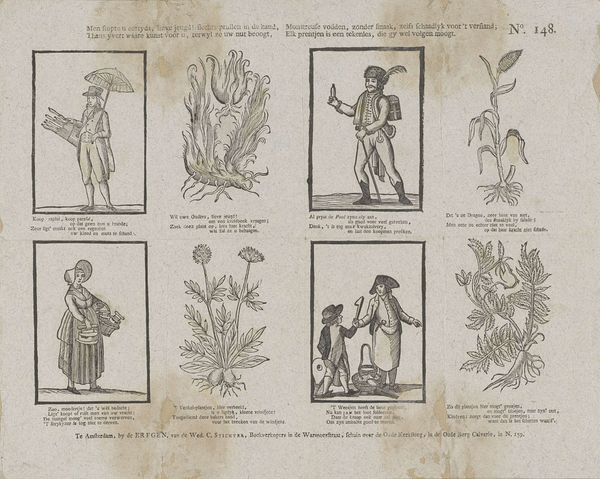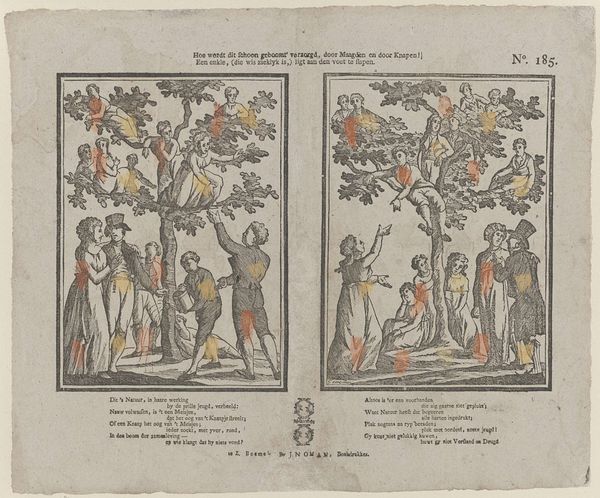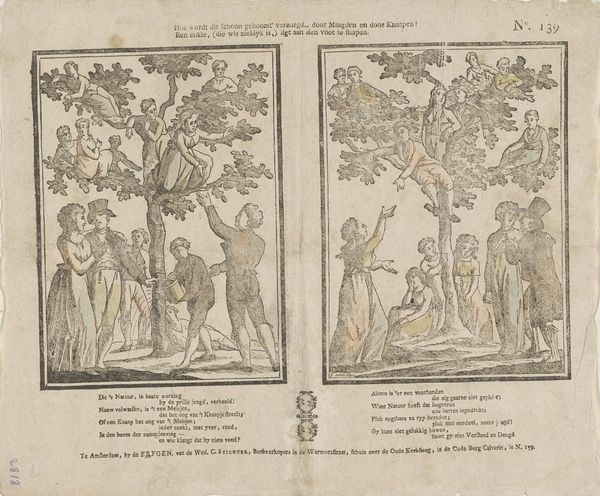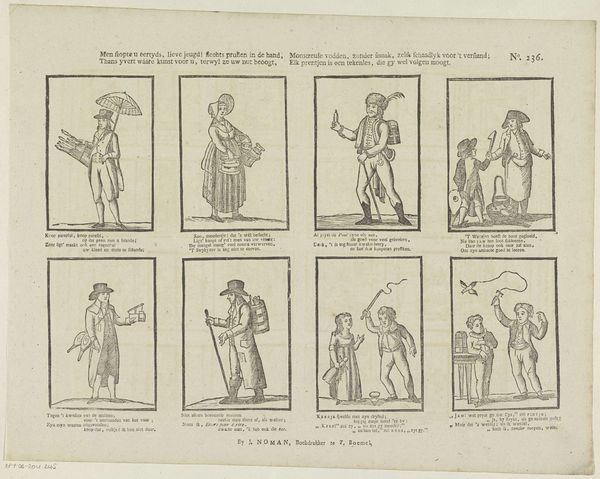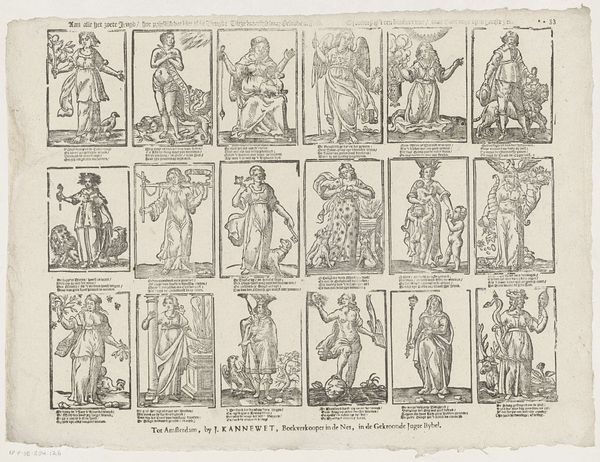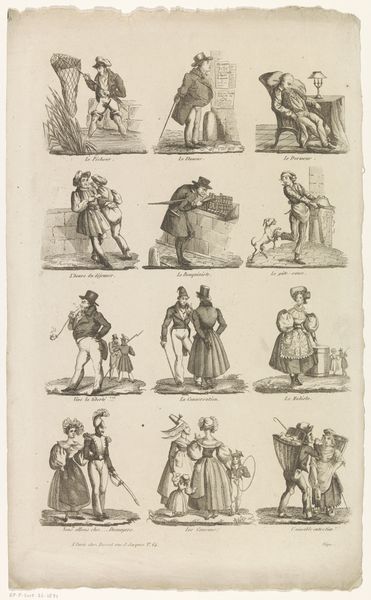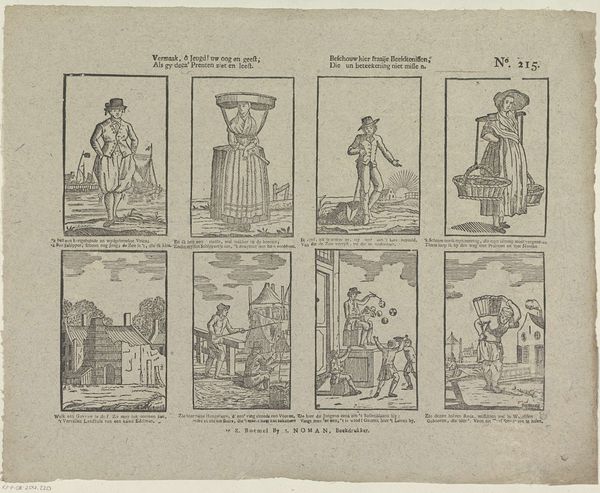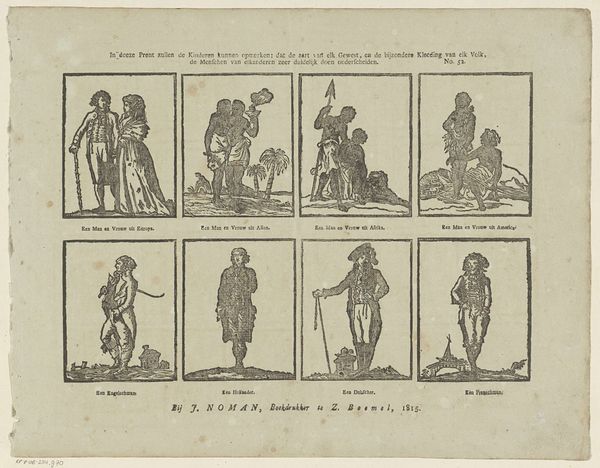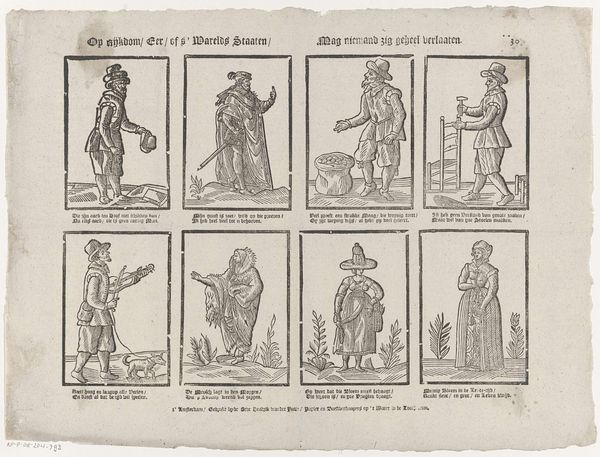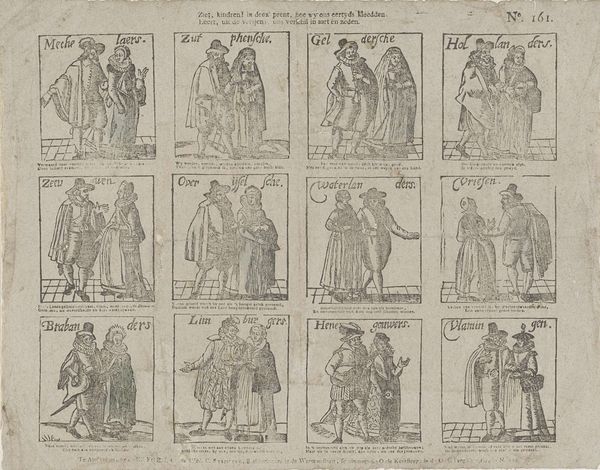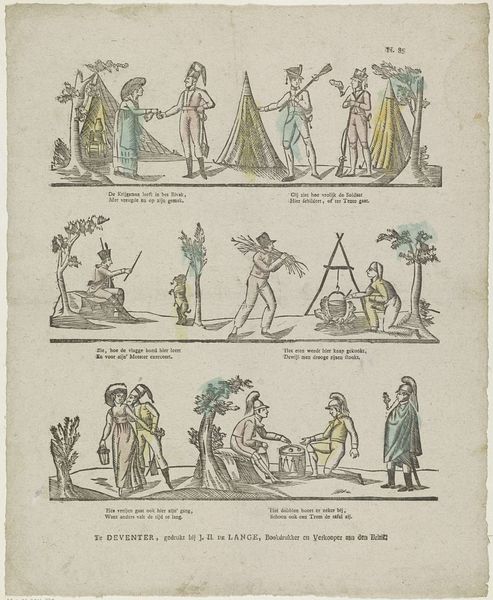
Kindren! hebben we u, reeds dikwyls, met een nieuwe prent voldaan, / Deeze neemt gy, ongetwyfeld, weder met genoegen aan 1715 - 1813
0:00
0:00
print, engraving
#
comic strip sketch
#
imaginative character sketch
#
dutch-golden-age
# print
#
sketch book
#
personal sketchbook
#
idea generation sketch
#
sketchwork
#
sketchbook drawing
#
genre-painting
#
storyboard and sketchbook work
#
fashion sketch
#
sketchbook art
#
engraving
Dimensions: height 330 mm, width 414 mm
Copyright: Rijks Museum: Open Domain
Editor: This is "Kindren! hebben we u, reeds dikwyls, met een nieuwe prent voldaan…," an engraving from sometime between 1715 and 1813, currently held at the Rijksmuseum. It looks like a page from a children's book, maybe? The figures are quite charming but somewhat roughly drawn. What catches your eye about this print? Curator: I see a fascinating confluence of childhood, nature, and perhaps even moral instruction, all conveyed through symbolic imagery. Consider the placement of each scene: children actively engaging, paired with illustrations of flora. Each pairing could represent a lesson or virtue the artist wanted to impart. Do you notice how the human figures interact with the plants and each other, what stories those relationships suggest? Editor: It seems like there’s a contrast between scenes. Some show harmony, like the ones with kids tending plants, but others… that boy with the whip and the bird. That seems… less positive. Is it about good and bad behaviors, perhaps? Curator: Precisely. The artist uses familiar imagery, especially common childhood activities and the easily recognizable forms of plants, to build a shared understanding with the viewer. Think about the tradition of bestiaries – assigning moral qualities to animals. Here, it seems plants might play a similar role. The plants could be symbols themselves! Editor: So the types of plants, the children’s actions... they all add layers of meaning to what at first seems like simple drawings. It really highlights how even everyday images can carry hidden depths! Curator: Exactly. Visual language is about shared memory, common cultural reference points, and emotional triggers, whether we're fully conscious of it or not. That’s how imagery stays relevant through time. Editor: This gives me a totally new perspective; thank you. I’ll definitely pay more attention to these hidden visual cues in my own work from now on.
Comments
No comments
Be the first to comment and join the conversation on the ultimate creative platform.
